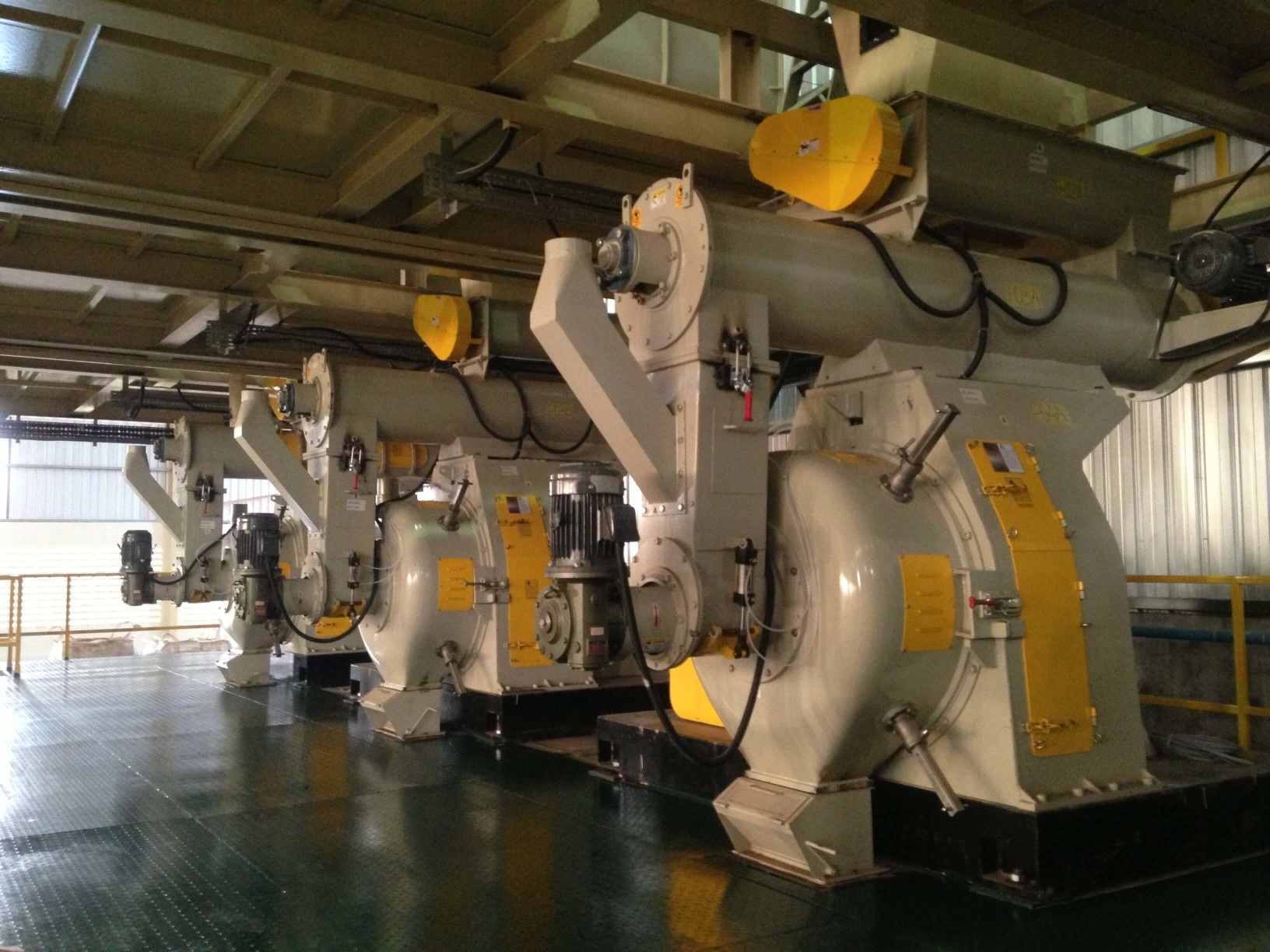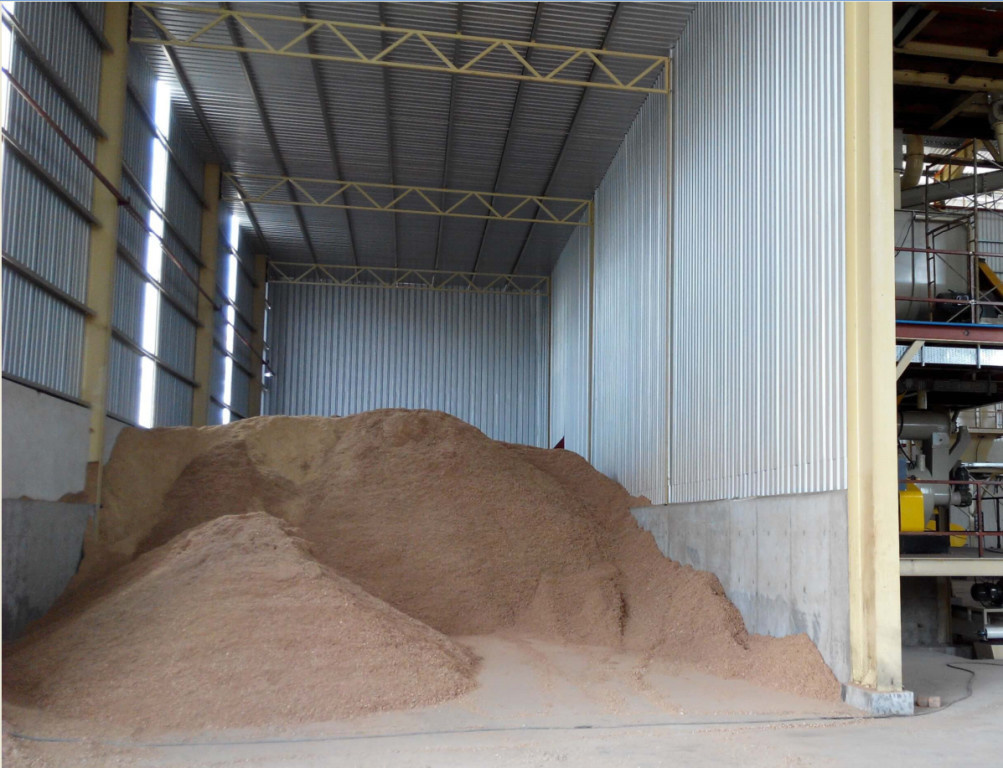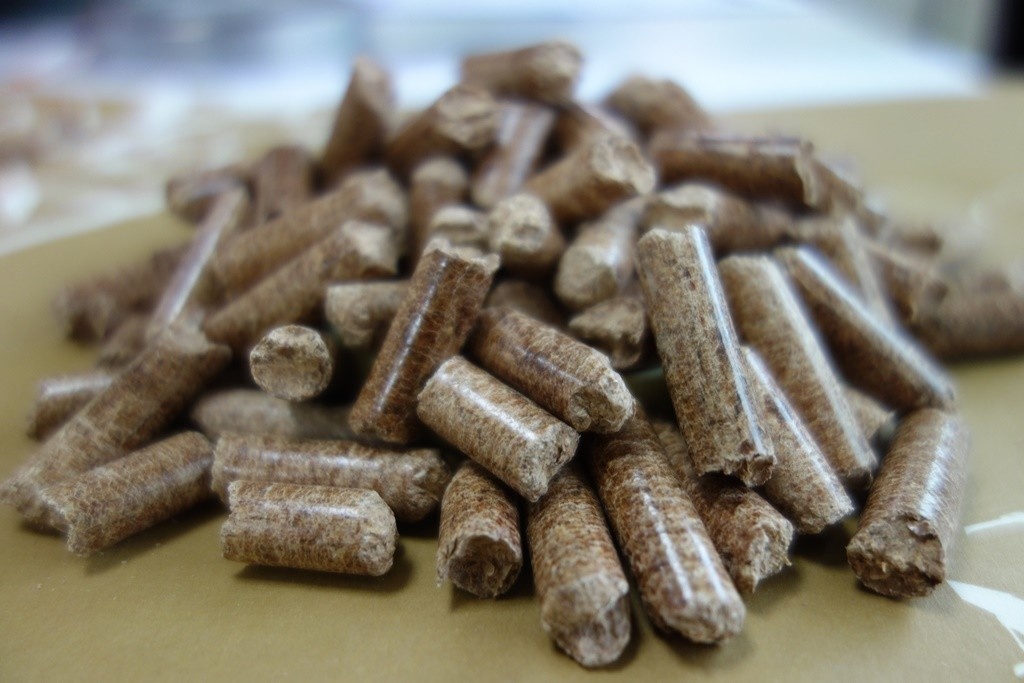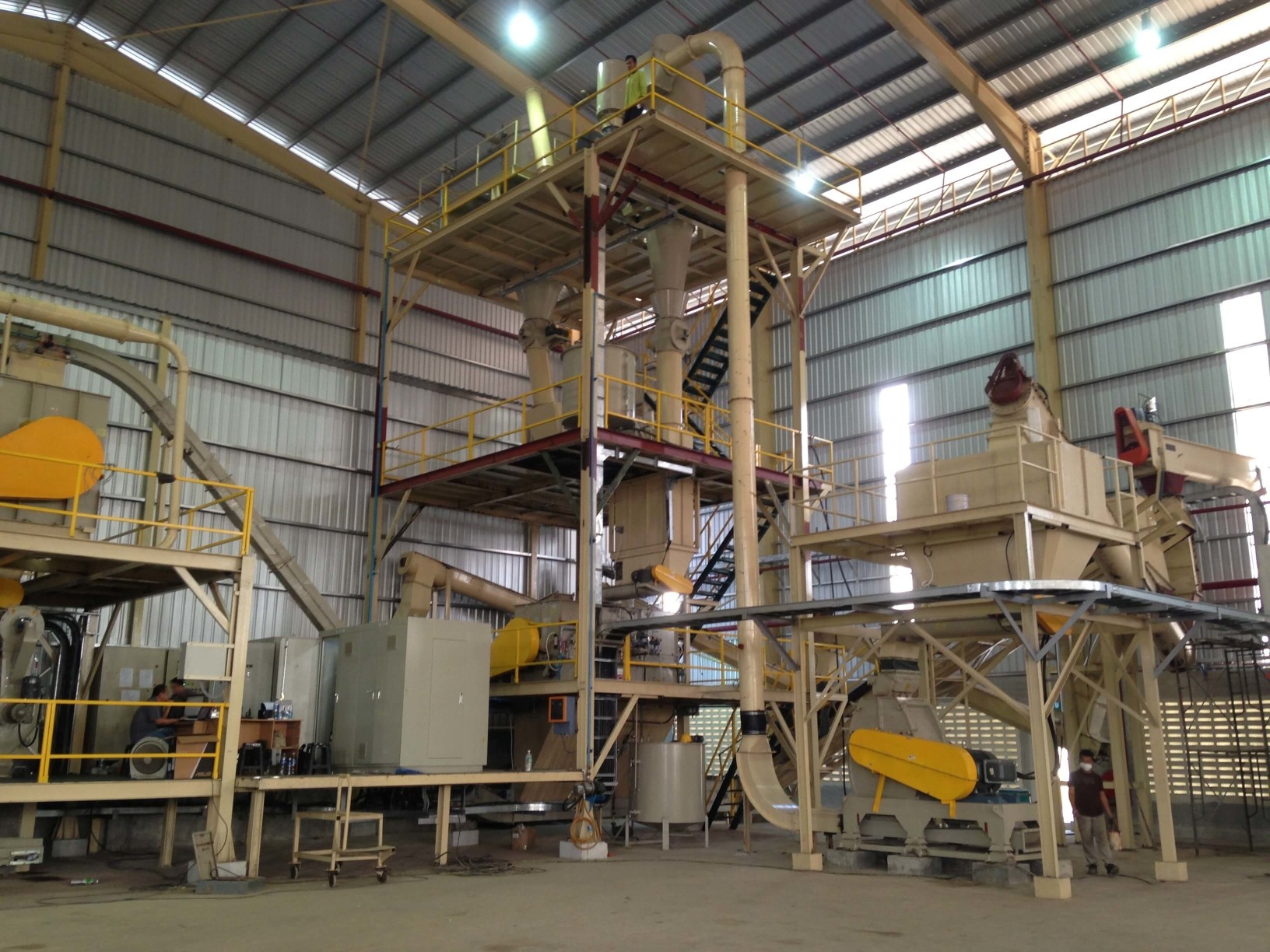Wood pellet line is the process of making wood waste into solid fuels
which are used for burning purposes. Wood Pellet is generally made
from compacted sawdust and related industrial wastes from the milling
of lumber, manufacture of wood products and furniture, and
construction.
IDAH offers complete process solutions and consultancy that will help
you integrate smoothly into the wood pellet business. In producing
wood pellets, there are some important variables that we need to pay
attention to, such as raw material purity, moisture content, particle
size, and pellet strength.

Raw Material
The raw material for wood pellets may differ according to the source. It may come in a log shape, board shape, sawdust, and many other. A pre-crushing may be needed to reduce particle material size
Pre-grinding
Optional step for coarse material.
Pre-grinding will lower the
energy needed for post-grinding.
Daily Tank Storage
Daily tank storage will contain the material needed for production that day.
Dosing and Weighing
The material will be dosed based on the formula.
Post-grinding (optional)
Post-grinding is the final size reduction in the system.
This step can be omitted if not necessary.
Mixing
In this step, some water, oil, or other liquid may be added to help the pelleting process.
Pelleting
Pelleting starts with pre-conditioning, adding steam to further hydrate, and cook the material before entering the pelleting chamber to be formed into pellets.
Cooling
Cooling utilizes ambient air to cool down the hot pellet from the
pellet mill.
Thorough cooling is needed to prevent condensation inside the
packaging.
Packing
Packing gives protection to the pellets and also give easiness to handle and transport to customer's hand

Pelleting process description for wood pellet
After the pelletizing process, the wood pellet is hot. Cooler lowers the temperature of the hot pellets to ±5 °C of room temperature and reduces the moisture by using ambient air. Cooling would extend the shelf life of the wood pellet.
All pellets will go through a vibration sieve to remove any irregular pellets or dust.
Weighing cell and bagging machines put pellets into bags with chosen quantity and seal the bags for storage. Finished products can also be loaded by trucks or in container bags.

Features and Benefits of IDAH Process Design and Equipment
IDAH firmly believes in a strategy of design fit for purpose. We recognize the constraints our customers face with rising ingredient costs, energy costs, and overheads costs, yet in the face of these challenges, it is still expected that high-quality products be supplied into a very competitive market. Our design philosophy is to work continuously to refine and improve processes and equipment to maximize the success of our customers. The following describes some of the features and benefits resulting from this philosophy.
We design our equipment for continuous operations and fulfill the expectation for minimal downtime. Our mission is to see our equipment still working years after installation, with only maintenance required being routine maintenance caused by normal fair wear and tear.
Two perspectives are influencing the formulation: culturing performances and efficiency of the machinery. For example, choose the right wood source is essential. Inappropriate wood sources will lower the steam incorporation level and causes jams at the pellet mills. Fat and moisture content play inseparable roles in the hammer mill throughput.
The independent drive on each shaft of the IDAH twin shaft lowers power consumption and noise. The paddles' reverse rotation allows completely emptying the chamber. The misting steam and water injectors further improve conditioner performance. The following conditioner system used steam jacketed (or heat jacketed) to create a homogenous mix with little to no free water. Insufficient pre-conditioning will cause cracks on the pellet surface and creating dust fines.
The counterflow cooler is used for cooling pellet and extrudate. Warm (hot) pellets get into the cooling chamber, the suction fan will transport out the air inside the chamber, and fresh ambient air will enter the chamber from the bottom, promoting pellet cooling action. When pellets are accumulated and touch the high-level limit sensor, a pneumatic discharge swivel valve will operate immediately to discharge the products. Counterflow air heat exchange ensures to achieve high cooling efficiency.

Specification of Pellet Mills (for Wood Pellets)
| Model | PM-42RB | PM-53RB | PM-635RB |
| Main Motor (HP) | 150 | 250 | 350 |
| Operation Capacity1 (t/h) | 0.4-0.6 | 1.3-1.5 | 1.8-2.0 |
Note:
1) Wood Pellets, pellet die hole size Ø 8.0 mm, moisture content < 12%, oil content <7%

